In an innovative mix of technology, art, local history and social engagement, a touring listening booth allows us to hear service users and those working in the social care sector speak about their experience of the Covid 19 lockdown. Moving, insightful and sometimes very funny, it’s a record of an extraordinary period we all shared.
Infotec spoke to Helen Slevin, Co-Director of Filament Projects CIC, and Barney Heywood, Co-Artistic Director of Stand + Stare, about the philosophy and tech behind the Exchange…
What is the Exchange?
Helen: It’s a touring audio installation inspired by an old telephone exchange, designed to be easy to use and to transport — it fits in the back of a small transit van.
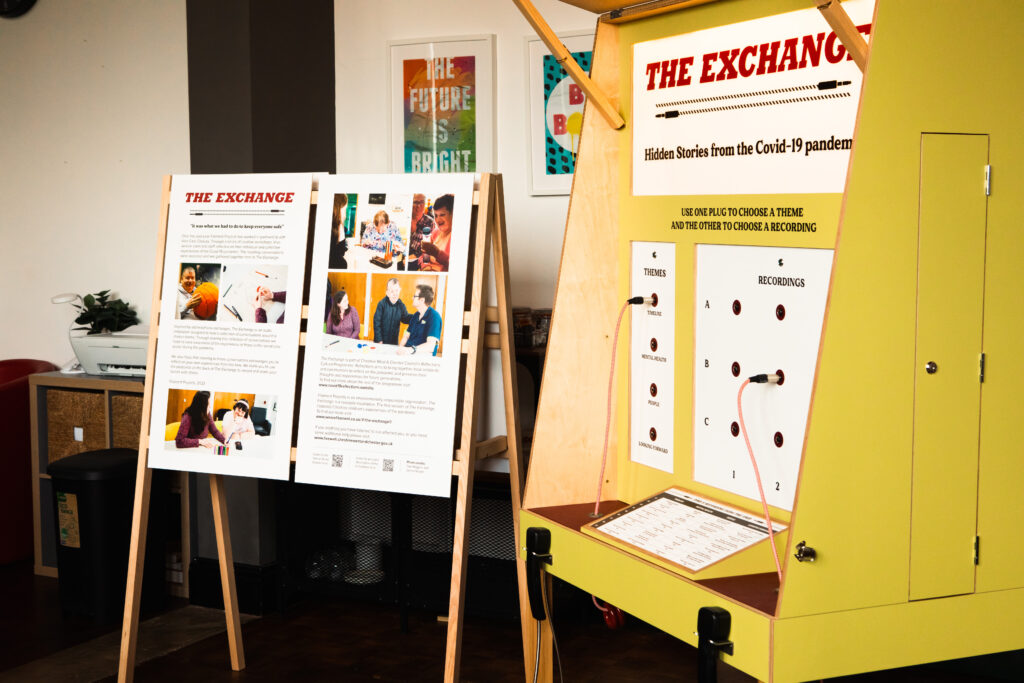
The Exchange listening booth and display, photo courtesy of Filament Projects CIC
The Exchange has two panels. The first has four sockets in it, one for each of our themes: ‘timeline’, ‘mental health’, ‘people’ and ‘looking forward’. The second panel, ‘RECORDINGS’ has nine sockets in a three-by-three grid. You take a cable and plug one end into a theme socket and the other into a recordings sockets. Based on the choice you make, it then plays one of 36 audio recordings of children sharing their experience of lockdown.
An information board explains what each of the recordings are and the project this was part of. QR codes also link to further information. We invite people to share their own experiences based on what they’ve heard. They write those on postcards which can be added to the back of the Exchange. That’s quite an analogue component.
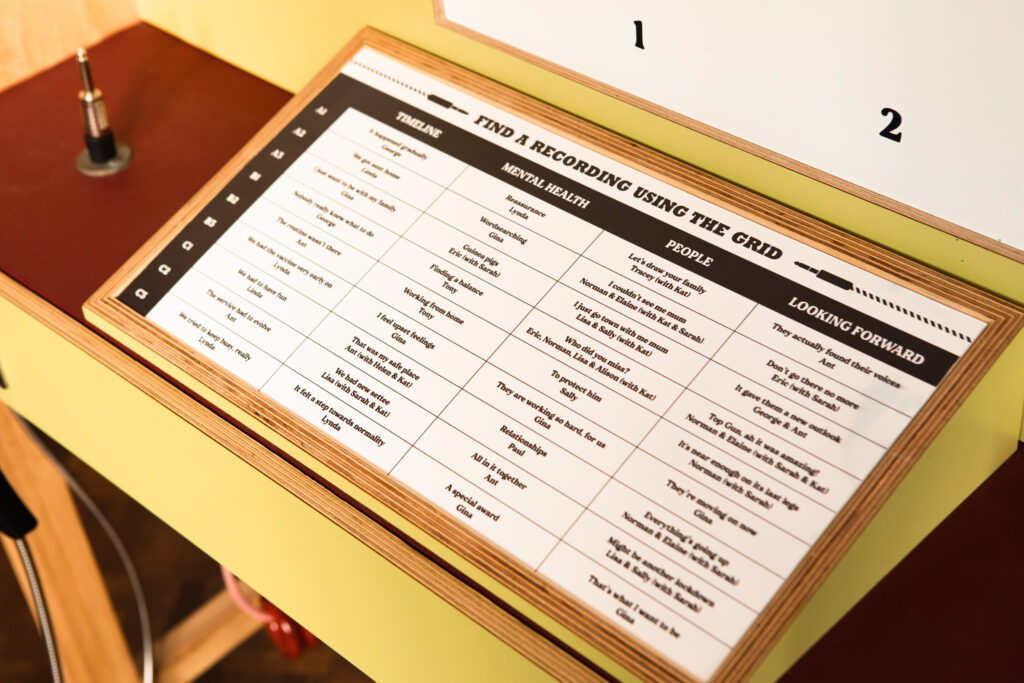
Information board listing the recordings on The Exchange, photo courtesy of Filament Projects CIC
What tech is involved?
Barney: We use a Raspberry Pi Zero with an audio board to store the sound files and an expansion board that allows us to have various inputs and outputs. The sockets and plugs act like switches to select a particular file. When you plug into a particular socket, the Raspberry Pi Zero recognises that you’ve chosen, say, theme two and recording three, and then plays the associated recording.
If you unplug, it plays a recording with a prompt for what to do next. For example, if you remove the plug from the themes socket, you get a looping track saying to choose another theme.
We’ve used this kind of tech in various ways on different projects but the sockets and plugs system here is unique. That’s all harking back to the concept of the telephone exchange and the retro aesthetic that comes with it.
Where did that idea come from?
Helen: It goes back some time. The iteration currently on tour holds recordings of conversations with people from the social care sector. But in an earlier version we spoke to 150 children.
The project was first conceived in 2019 and funded by the Arts Council. Sarah [Richardson, Co-Director of Filament] and I had been working with children for a while and wanted a mechanism to capture their feelings about a given theme. At that point, the theme was ‘the environment’. We wanted a way to share what children said and ensure people listened. The idea for the Exchange came out of that.
Once you’d had the idea, how did you go about realising it?
Helen: Sarah had seen some of Stand + Stare’s work at the Science & Industry Museum in Manchester, and it had a strong aesthetic look and technology behind it. We thought they were the people to work with on this, so went to them — to Barney — with the idea of capturing conversations inspired by a telephone exchange.
Then the aim was a mix of art and technology.
Barney: Yes, and that’s the main focus of what we do at Stand + Stare, that sweet spot in the middle of the two. The initial idea of a telephone exchange was a nice starting point but we needed to think about how someone who’d never seen such a thing before would interact with and use it. That meant breaking it all down into the simplest components. What does there have to be so that we recognise that it’s inspired by a telephone exchange? What tech is needed to realise that?
We worked closely together, talking through ideas and producing inspiration boards, which helped us find a common path to the design. I then produced a 3D drawing of the concept which we could refine. We always involve participants in the design, though that was more challenging here because the pandemic meant we had less direct access to them. We produced options for the children to look through but — because of that lack of direct access — we didn’t get a huge amount of feedback. Even so, I think you can see that children were involved in the design. It’s intuitive. People don’t want to be instructed how to use it: they want to get stuck in and work that out for themselves.
Helen: That’s what we wanted from it. To achieve that, we had to think about things such as what to call the components. The technical terms are ‘jack’ and ‘socket’, but would small children understand what those meant? We’ve gone for ‘plug’ and ‘hole’.
Barney: Yes, we had to cater for the child that has no context. In fact, a lot of people might not know what a telephone exchange is. It also had to be robust and tactile so that people want to interact with it, with the confidence that it won’t break. There’s leather, metal and wood, with a formica finish that gives it the retro look. The cables and plugs make it all very hands on, but also very different to touchscreen technology which is a one-dimensional flat screen.
Those elements are what make it work. For the second iteration of the Exchange, talking to people in the social care sector, we’ve modified the design, but in things like adding the feedback wall on the back for people to add postcards with their own reactions and memories.
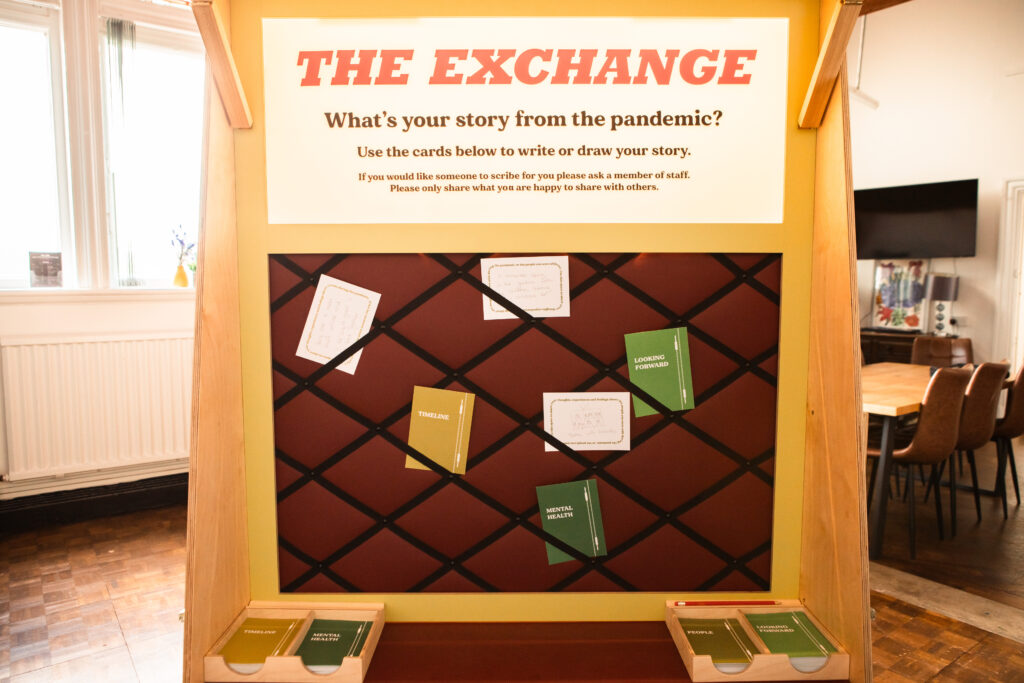
Postcards allow visitors to add their own memories to The Exchange, photo courtesy Filament Projects CIC
You said the original idea was to get children talking about the environment – why did it become about lockdown?
Helen: Once the project had been agreed, in February 2020 we went out to record children in selected schools in Cheshire. The problem was that, given when we were doing this, the children didn’t really want to talk about the environment — everything at the time was about Covid. Then we went into lockdown. We pivoted the project, using it to capture what the children wanted to say. It became a record of Cheshire children’s experiences of the Covid 19 pandemic. Over that summer, we were able to get into a school and record conversations with children who had just been through lockdown. We then shared those recordings, touring them at a few venues and on our website.
People at Cheshire West and Chester Council saw this and had already conceived a programme of work reflecting on the impact of the pandemic, trying to uncover hidden stories that maybe hadn’t been heard in the mass media. That’s a multifaceted programme, some of it about enhancing green spaces and another part working with artists. We could see a way to make more use of what we’d already gathered, this time focused on the social care sector, particularly adults with learning difficulties. Again, that was about listening to people whose stories maybe hadn’t been heard. We worked with service users and staff at Vivo Care Choices.
What was involved in recording people?
Helen: We used a handheld Zoom digital audio recorder for some of that. We also worked with composer and sound engineer Paul Rogerson who brought his own, more sophisticated recording equipment. There was a mix of formal sessions and interviews, and more informal conversations.
What have you learned from the stories you recorded?
Helen: People’s experience of lockdown can be very different, depending on their individual circumstances. Some of the stories were very hard to hear. The thing that stayed with me was staff in care settings who didn’t know what they were facing but who had to try and reassure service users while feeling all that uncertainty and pressure.
I think we were also surprised by how many positive stories there were. There was the fact that care homes were quieter because they had to restrict the numbers of people coming in. Some of the staff told us that this quieter environment meant some service users found their voices. Some even flourished in that quieter, calmer space. There were other positive stories — the person who loved all that time being at home with their mum, or the people who had time to reassess their lives.
People also faced very difficult things and in some cases hadn’t been able to talk about them. We’re very aware that that might also be true of people listening to these recordings, and it might be triggering. We’ve been careful in choosing and editing the recordings shared on the Exchange, but there’s also information presented with it so that people can get support if they need it. We point them to services such as Live Well Cheshire West.
What sort of response have you had to the Exchange?
Helen: It’s been really well received in the venues it’s been in and we’ve received a lot of feedback forms. We produced some forms with prompts to help guide people in responding. I recently went to pick up the Exchange from one venue and move it to the next, and they’d run out of cards to respond to the ‘mental health’ theme because there’d been so much demand.
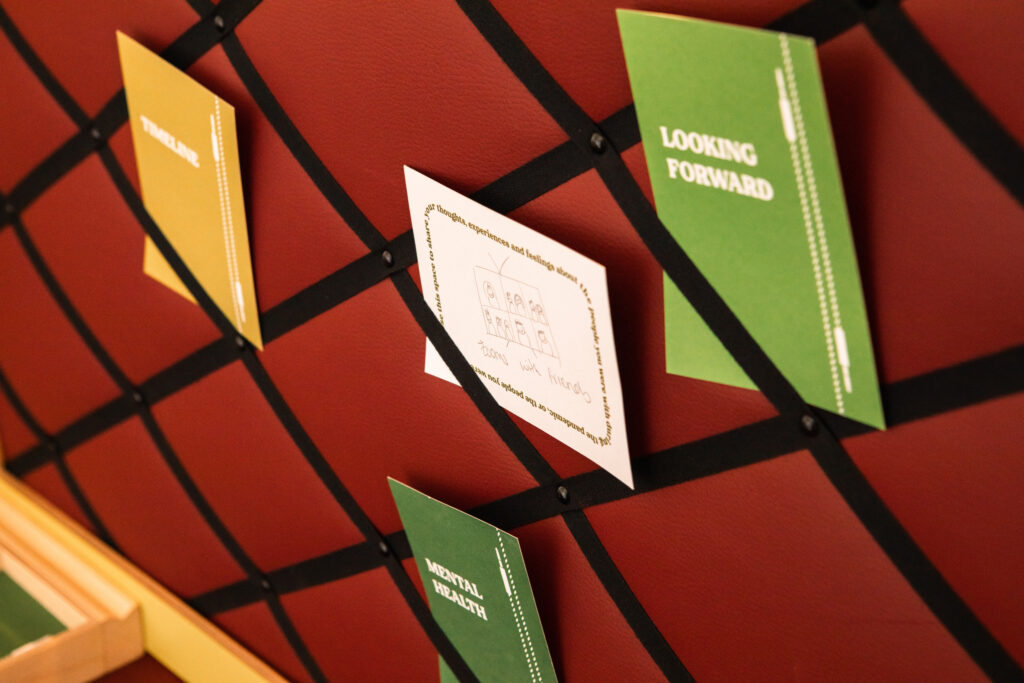
Examples of the themed postcards used for gather feedback from visitors to The Exchange, photo courtesy Filament Projects CIC
We’re starting to see some themes emerge from responses, and we’ll see how those compare to the venues that it goes to next. A lot of responses are about how its stirred people’s own memories and feelings, making them reflect on their experience of lockdown. There’s so much we’ve already forgotten of what we all went through. With a bit of reflection, there are things people want to say.
Another great response is that we’ve had permission to store all our recordings at Cheshire Archives, so they’ll be resource for future research. Permissions are important in a project like this. Participants can opt out at any time. There are practicalities involved in ensuring we have the right permissions for any use we make of these recordings.
What would you like to do next with this kind of technology?
Barney: We’ve been working on different versions of the same basic idea. Recently, we produced a dining experience for residents in care homes. It’s a portable tray with different dishes on it. As you move the dishes on the tray, you trigger different audio recordings. That doesn’t use sockets and plugs like on the Exchange. Instead, it’s based on radio frequency identification (RFID), but it’s the same concept of a series of pre-recorded audio tracks, in this case to deliver stories about food.
Helen: Yes, as Barney says this kind of technology has a lot of potential applications. It’s also really accessible in both price and usability. It’s very plug-and-play, so any venue it goes into doesn’t need staff to manage it. You just plug it into the mains and turn it on. That and the more analogue nature of this kind of technology is important. It’s not all sophisticated hi-tech flat screens. It’s cables, plugs and audio recordings — tech that people aren’t scared of.
Helen and Barney, thank you very much. The Exchange is touring Cheshire West and Chester this autumn, beginning at the Storyhouse in Chester and ending at the Lion Salt Works in Marston.
In related news:
Interview: HUG by LAUGH — the science of teddy bears for people living with dementia









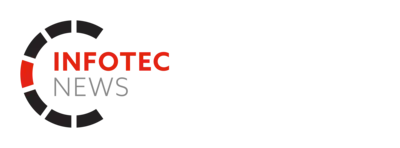






Leave a Reply